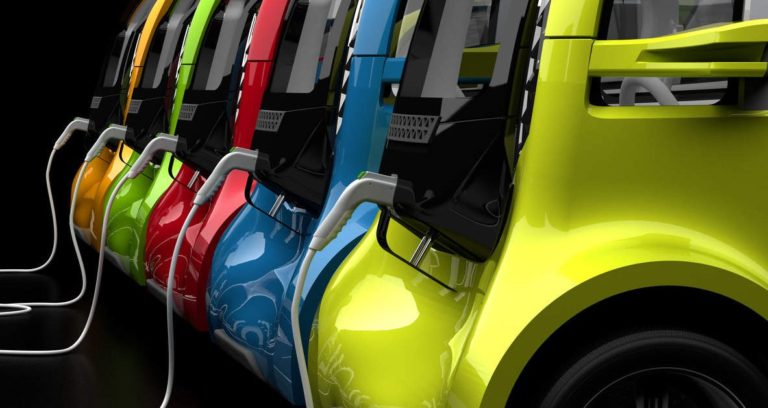Advertisements
A Selective Collection in condominiums is an increasingly essential practice to promote sustainability in cities, reducing the amount of waste that ends up in landfills and encouraging the reuse of materials. However, implementing an efficient selective waste collection system in condominiums is not a simple task and can face several challenges.
From lack of planning to problems with communication and training, there are many factors that can compromise the success of a project. Selective Collection. This post explores the main problems that arise during the implementation of Selective Collection in condominiums and presents practical solutions to overcome them, helping to ensure that the process is successful and sustainable.

Lack of Planning: The First Obstacle
One of the main reasons for the failure of a project Selective Collection in condominiums is the lack of adequate planning. Often, those responsible underestimate the amount of recyclable waste that will be generated or do not foresee the space needed to store the materials.
To ensure the success of the project, it is crucial to carry out detailed planning. Estimate the amount of recyclable waste that each family unit will produce weekly. For example, an apartment with two people generates, on average, a 100-liter bag of recyclables per week, while a family of four people can produce up to 200 liters. With this data, it will be possible to calculate the total volume of waste generated in the condominium and plan the storage space accordingly.
In addition, it is important to define who will be responsible for collection and how often it will be carried out. Recyclables generally need to be collected more frequently than regular waste, due to the large volume of materials generated.
Solutions for Lack of Planning
- Measure the space needed to store recyclable waste.
- Establish the collection frequency based on the volume generated.
- Assess whether additional containers are needed for storage.
Storage Capacity: Insufficient Space
The lack of adequate space for storing recyclables is another common obstacle in implementing the Selective Collection in condominiums. Even if the volume of recyclables is estimated correctly, the condominium may not have enough deposits to accommodate all the material until it is collected.
Let’s take as an example a building with 50 apartments, where each unit is occupied by two people. This building will produce, on average, 5,000 liters of recyclable waste per week. If the condominium’s storage unit only has a capacity of 3,000 liters, there will be an excess of 2,000 liters of waste, which can cause accumulation and disorganization.
How to Solve Capacity Problems
- Install larger or additional containers if space is available.
- Increase collection frequency to avoid accumulation of materials.
- Hire a specialized company or cooperative to collect recyclables regularly, avoiding exclusive dependence on public collection.
Inefficient Communication: Resident Engagement
A Selective Collection will not be successful in a condominium without proper communication with residents and employees. Many times, projects fail because people are not properly informed about the importance of waste separation or do not know how to proceed. Poorly planned communication can result in low adherence and disorganization.
It is essential to keep everyone involved in the process, including residents, employees and service providers, well informed. Use all available means of communication in the condominium, such as bulletin boards, emails, social media groups and elevator notices. The clarity and frequency of these communications are essential to the success of the project.
Tips for Improving Communication
- Send short, direct communications, preferably with images, explaining how the Selective Collection will be done.
- Communicate the steps of the process: start of collection, separation procedures and the results obtained.
- Keep everyone informed about the benefits of the project, such as environmental impact and savings generated.
Inadequate Training: Lack of Training
Often, the lack of knowledge about the Selective Collection is one of the factors that prevents adherence to the project. Even if people are willing to collaborate, they may not know how to separate the materials correctly or not understand the importance of the process.
Proper training of condominium residents and employees is essential for the success of the Selective Collection. Rather than relying solely on posters or elevator information, it is ideal to provide in-person training. These events should address not only what should be separated, but also how and why to do the separation.
How to Organize Effective Trainings
- Hold training sessions at times that are convenient for residents, preferably in the evening, and for employees during the morning.
- Focus on practical explanations on how to separate waste.
- Emphasize the importance of cleaning recyclables to prevent odors and pests.
Lack of Resident Cooperation: Resistance to Change
Another common challenge in condominiums is residents’ resistance to changing their habits. Even with clear communication and adequate training, there may be people who are unwilling to participate in the process. Selective Collection. This can happen for a number of reasons, such as complacency, lack of time or simply lack of interest.
To overcome this barrier, it is important to demonstrate the results of the project. When residents see that their efforts are generating a positive impact, such as reducing waste or supporting recycling cooperatives, they tend to engage more in the process.
Strategies to Increase Resident Engagement
- Share the results of the Selective Collection, such as the amount of recycled waste and the benefits to the environment.
- Highlight the condominium's achievements, such as savings generated or support for social causes.
- Create awareness campaigns that involve all residents, such as competitions to see which block recycles the most.
Unrealistic Expectations: Recycling Doesn't Generate Income
A common misconception in many condominiums is to believe that Selective Collection will generate significant income. While selling recyclable materials may generate some financial return, this rarely covers all of the project's costs. Focusing too much on the idea of profit can prevent the project from Selective Collection be implemented in a realistic manner.
The main objective of Selective Collection in condominiums should be the reduction of environmental impact, not the generation of income. Even if the amount raised from the sale of recyclables is low, the environmental and social benefits are invaluable.
How to Manage Expectations
- Clearly explain that the purpose of Selective Collection is to reduce environmental impact, not to generate profit.
- Focus on long-term benefits, such as reducing pollution and supporting recycling cooperatives.
- Reinforce the importance of everyone participating in the process, regardless of financial results.
Overcoming Challenges and Successfully Implementing Selective Collection
A Selective Collection Condominiums face a number of challenges, but with proper planning, clear communication and effective training, it is possible to overcome them and implement a sustainable and successful project. The key to success is to involve all residents and employees in the process, ensuring that they understand the importance of waste separation and the benefits it brings to the environment.
Although the Selective Collection may not generate immediate profit, the long-term gains, in terms of sustainability and awareness, are invaluable.
Check out other interesting facts about recycling clicking here.
Learn how to make art by recycling, Click here.




Interesting article.
I liked the article, very objective and optimistic. I think it's worth separating even the recyclables that haven't been recycled nearby. It can help put pressure on them to be recycled.
Exactly, Paula. For us consumers, it doesn't matter whether they are recycled or not. We must always separate them properly.
It's a shame that in my city the city hall's support for recycling is a sham. How important it is for the environment, future generations and job creation.
Djalma, at times like these I always like that quote from Gandhi: “Be the change you want to see in the world.” Keep spreading the culture of recycling, separating and disposing of waste as you can. One day your efforts will be rewarded and imitated!
Ricardo, good evening! Why do you state in your text “Forget the idea that recyclables will generate income for your condominium. Continuing to harp on about this can be a factor that prevents the project from being carried out in your condominium.”? What, in your opinion or according to your knowledge, allows you to state this? If there are companies that sell these materials, collect them, etc., why is this not feasible in condominiums, where there are a large number of people generating this waste daily and there is an obligation to dispose of it correctly according to the PNRS? Could this be the issue of storage? I'm new to this and I'm looking for information. Thank you. Best regards.
Hello Carlos Alberto. As you can see at the end of the text, the article is not written by me. The statement was made by Alexandre Furlan, who is an expert on the subject. Try to contact him (link to his website in the article). In any case, he talks about the frustration that the condominium has when trying to operate selective collection from a financial perspective. According to him, when it comes down to it, it is not worth it. The cost of transportation, cleaning of the materials and the entire process ends up being more expensive than the value of the materials. He prefers to emphasize the social aspect. The condominium pays for the recyclables to be disposed of correctly, helping recycling cooperatives.
Thanks Ricardo, sorry for the lack of attention. I have been researching about it to develop a project along these lines. I will try Alexandre. Happy Holidays!
Stay tuned. Whenever we have news, we will publish a new article.
Great article! I am implementing selective waste collection at my company and the biggest challenge is the issue of storing recyclables. First, because of the space provided by the condominium for temporary storage of waste, and second, because of the minimum volume required by some cooperatives for collection. Therefore, the need to transport the small volume of recyclables generated during the week generates a cost that ends up making the process difficult to operate. But despite the difficulties, it is one of the most practical ways to raise awareness of environmental issues by using visual resources and being practiced daily.